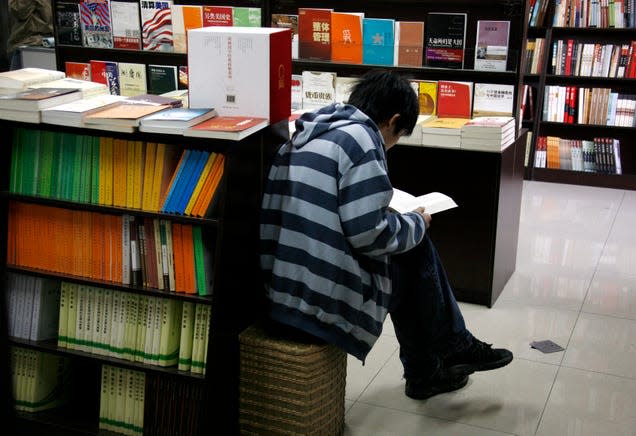Two new phrases in a top Chinese dictionary highlight Beijing’s economic hopes—and pitfalls

The latest edition of the Standard Dictionary of Contemporary Chinese includes a number of new entries that reflect key political and socioeconomic trends in China. Among them: “sharing economy,” “carbon peak” and “carbon neutral” (referring to China’s ambition of hitting peak emissions by 2030 and be at zero emissions by 2060), “mobile payments,” and “influencers.”
These terms hadn’t gained currency in 2014, when the Beijing Foreign Studies University last published an edition of the dictionary. Their inclusion now is a measure of how much China and the world have changed in eight years.
In particular, two phrases added to the dictionary illustrate the outlines of China’s major economic aspirations—as well as its challenges ahead.
“New normal”: no longer so new, and still unrealized
One such aspiration is wrapped up in the phrase “new normal” [新常态], which has earned a spot in the dictionary’s pages.
According to Chinese state media, the Chinese version of the phrase and its eponymous theory were first coined by president Xi Jinping in 2014. Xi used it to refer to a shift in the economic growth model, from one defined by rapid increases in GDP to one where growth is “medium-high” and more emphasis is placed on “quality and efficiency.”
Data provided by David Bandurski of the China Media Project, a research group focusing on Chinese media and political communication, shows a sharp spike in 2015 in articles using the phrase “new normal” in the Chinese Communist Party’s official mouthpiece, People’s Daily.
It was followed by just as sharp a drop off. But that doesn’t mean Beijing gave up on adjusting its growth model. It just does so under different buzzwords now, like “high quality” growth and “common prosperity.”
If the addition and subtraction of words from dictionaries can be considered reflective of a society’s zeitgeist, then the inclusion of “new normal” in the updated Standard Dictionary of Contemporary Chinese is a reminder that Beijing is far from realizing its goal of rebalancing its economy.
The ongoing real estate crisis and the concurrent economic slowdown in China bear this out. For decades, China has relied heavily on what economists like Michael Pettis consider to be non-productive, or insufficiently productive, investments in real estate and investment to drive GDP growth. Now the property sector is sputtering and threatening to implode.
Meanwhile, Chinese authorities hope to rev up the country’s stalling economy by cutting key rates. But the more fundamental problem is weak domestic consumer demand and businesses reluctant to invest and hire.
Until these deeper economic issues are addressed, Beijing’s “new normal” will likely only exist within the pages of dictionaries.
“Overtaking on the bend:” a key focus of industrial policy
Another top economic aspiration is to supercharge China’s technological capabilities and surpass those of major powers like the US.
That aim is distilled into the phrase “overtaking on the bend” [弯道超车], a staple of China’s many industrial policies.
Defined literally, the phrase refers to passing another car while rounding a bend. Figuratively, it means achieving rapid progress and what Chinese officials often call “leapfrog development,” cutting tightly around a corner by targeting emerging and disruptive technologies where China can gain a strategic edge over other competitors.
The appearance of the phrase in People’s Daily spikes after 2015, the year China released its “Made in China 2025" industrial policy, a sweeping plan to transform the country into a high-tech manufacturing power.
One successful example of China “overtaking on the bend” is in the world of electric vehicles and batteries. For years, Western automakers focused on nickel-based batteries to power EVs. China took another route: the less energy-dense, but cheaper, lithium-iron-phosphate (LFP) battery. That bet paid off. Now major carmakers from Tesla to Ford have embraced LFP, thanks to its lower cost. And China is indisputably the leader in LFP technology and production.
Not all of Beijing’s efforts to “overtake on the bend” have panned out, however. For example, while it has made great progress in developing its own semiconductors, China is still considered to at least a decade behind the most cutting-edge players. On the chips front, then, Beijing is still rounding the bend.

